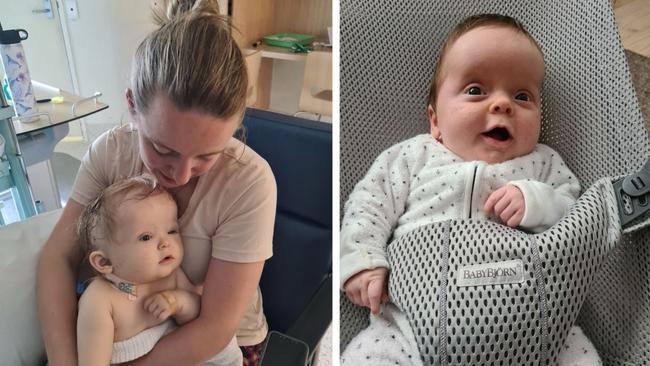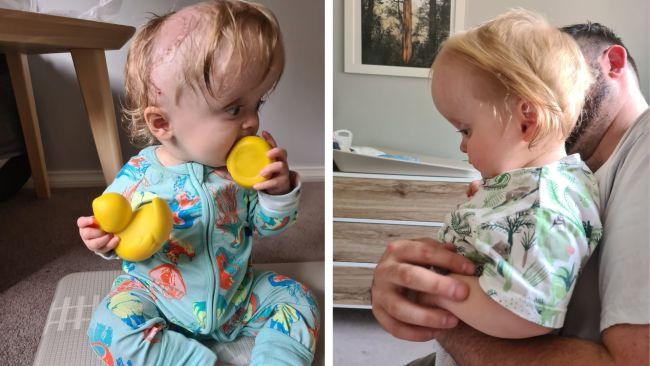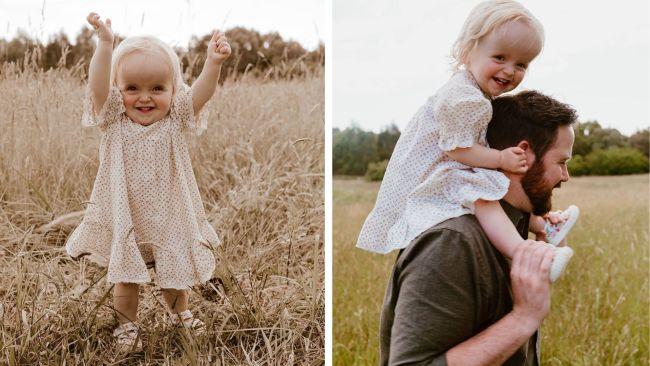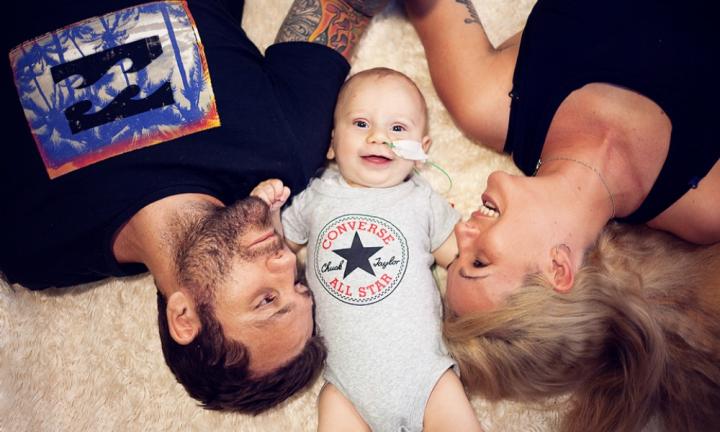Craniosynostosis: Isla's brain was growing too fast and big for her skull
Isla’s brain was trapped inside her skull, with her skull fused closed, there was no room for her rapidly growing brain.

Lifestyle
Don't miss out on the headlines from Lifestyle. Followed categories will be added to My News.
Shortly after beautiful baby Isla was born, a midwife mentioned to Matilda, 28, from Yarra Valley, that her baby had a pronounced forehead.
“It was just a passing observation – and it does kind of run in the family, so, at first we didn’t really worry about it,” says Matilda.
But she soon discovered Isla had a potentially serious condition.
“I had a rough recovery after birth – I think Isla’s Maternal Child Health Nurse was waiting for me to be in a better place to deal with what was really going on,” says Matilda.
Want to join the family? Sign up to our Kidspot newsletter for more stories like this.

The news no parent wants to hear
Matilda and Isla’s dad Kieran were told it may have been Achondroplasia, a bone growth disorder that causes disproportionate dwarfism. Theirfirst port of call at Royal Children’s was the genetic specialist.
“The doctor measured her limbs and her torso, and said, ‘everything is in proportion, she just has a big head’,” says Matilda.
So that was ruled out. But, Matilda and Kieran were still convinced something was wrong, so they started seeing a Paediatric Osteopath, who felt tension in the bones of Isla’s skull, and eventually they were referred back to the hospital.
Matilda says Isla had strange symptoms, that at first could be explained by other things.
“In hindsight, I think it was because she did have pressure inside her skull,” she says.
With COVID in full swing, that only added to the drama, leading to delays in diagnosis. On zoom, a paediatric doctor took some screen shots of Islas's head from different angles.
“That was the first time we heard the term Craniosynostosis, it was really daunting. I really wanted to go down that rabbit warren of Googling, but I held off because I didn’t want to make things more stressful,” comments Matilda.
RELATED: This is your child’s brain on TV – and it’s scary

Craniosynostosis: a scary diagnosis
This condition occurs when the bones of the skull fuse together too early – leaving no space for a young child’s rapidly growing brain.
“I was so worried.... her brain was growing, kids love to learn new things, would that stop her? Could her skull handle that?”
The couple waited anxiously for the next appointment for confirmation, where their fears were confirmed.
“It was immediately clear to the surgeon, and we were told surgery would be likely,” she says.
Then Matilda and Kieran had to play the waiting game, for Isla to be old enough to endure the grueling seven-hour surgery. Timing was crucial.
Kieran says the path to diagnosis and then biding their time until she was robust enough for surgery was one of the biggest challenges.
“That was the really frustrating thing for us – we spent four months trying to figure out what was going on, and then six months waiting until she could have the surgery,” he says.
For Kieran, the diagnosis was definitely a double-edged sword.
“It was a weight off our shoulders, knowing what we were dealing with, but we knew we had a long journey ahead of us,” he says.
Islas's brain was under more and more pressure and bulging as the weeks passed. Her distorted skull was already putting pressure on her optic nerve.
“She wasn’t sleeping, she was clearly in pain and she was so clingy, even more so than when she was a newborn,” says Matilda.
Isla’s version of Craniosynostosis was extremely rare. Most kids have one suture, but Isla had two sutures, these are bands that connect the skull bones, that had joined prematurely. The entire top and whole back half of her skull was fused shut.

RELATED: Boy diagnosed with untreatable brain angioma
The life-saving surgery
The surgery doctors proposed was radical.
“They’d be cutting open her skull bones and putting it all back together like a puzzle,” says Matilda.
To prepare, the surgeon created a titanium model of a skull shape, designed after assessing the skulls of over 60 kids to come up with the optimal head shape for Isla’s age, which was 11 months at the time of surgery.
After the surgery, Matilda was shocked at her appearance, and couldn’t wait to hold and comfort her.
“She’d been laying on her face the whole time and the blood had run to her lips and face and they were really swollen,” she says.
It took weeks for Isla to recover from her ordeal, but now she is doing great.
“We saw Isla become a happy little girl, she started walking, she made up for the time she couldn’t do much,” Matilda says.
Kieran adds that they now treasure every moment they have with their little girl.
“We can do all the things with her that we had missed out on, COVID [lockdowns] were finished, the surgery was done and we could finally enjoy just being a family,” he says.
Doctors have said the operation was a definite success. Isla will need a CT scan every year until she is 16. Matilda says the hope is that the bones in her skull don’t close over and she won’t need another surgery.
“We will just have to wait and see.”
For now, the family is loving life – without the worry of Isla’s brain putting pressure on her skull.
“It’s such a relief to know that her brain can grow freely and we can just enjoy our little girl and see her blossom,” says Matilda.
More Coverage
Originally published as Craniosynostosis: Isla's brain was growing too fast and big for her skull




